
The Louisiana State Capitol | Vintage Capitol Postcards | Capitol Photographs
The "Old" Louisiana State Capitol
On September 21, 1847, the City of Baton Rouge donated to the state of Louisiana a $20,000 parcel of land for a state capitol building, taking the seat of the capitol away from the City of New Orleans. The land donated by the city for the new capitol stands high atop a Baton Rouge bluff facing the Mississippi River, at the foot of North Boulevard.
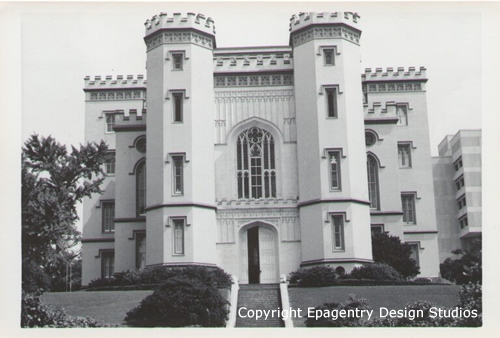 The "Old" State Capitol on North Boulevard at the Mississippi River, downtown Baton Rouge, Louisiana (Staff Photo) |
Construction took place between 1847 and 1852.
The building is one of the most distinguished examples of Gothic Revival architecture in the United States.
Designed by architect James Harrison Dakin, its floorplan, towers, exterior stained glass windows and gables give it the appearance of a 15th-century Gothic Cathedral.
Dakin referred to his design as "Castellated Gothic" due to its decoration with cast-iron, which was both cheaper and more durable than other building materials used at the time. The building design was so unusual and distinctive that its romantic, medieval appearance earned the Old Statehouse ridicule from the famous author Mark Twain.
A National Historic Landmark, the building was restored in the 1990s and now houses the Museum of Political History.
The Need to Replace the Old State Capitol
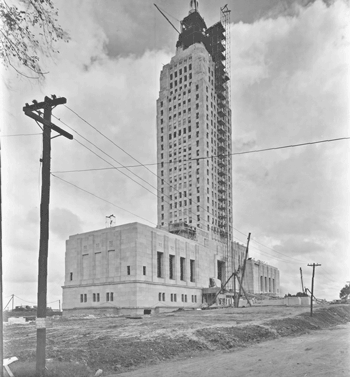 The "New" Louisiana State Capitol under construction in Baton Rouge |
By the late 1920s, the old state capitol was becoming obsolete and crowded, and the construction of a new building was actively discussed.
Governor and U.S. Senator Huey Pierce Long had a vision of a new, towering Louisiana State Capitol building.
Since Long had expressed interest in building a tower, the New Orleans architectural firm Weiss, Dreyfous and Seiferth used the Nebraska state capitol, under construction at the time, as a model. A 27-acre site just north of downtown Baton Rouge was selected for the new building.
Construction of the "New" Louisiana State Capitol Building
The Yazoo and Mississippi Valley Railroad company built a rail spur to the construction site. Approximately 2,500 rail cars of materials were brought via this rail spur for use on the capitol.
The total number of rail carloads consisted of 500 loads of tile, 285 of sand, 240 of gravel, 200 of limestone, 190 of cement, 108 of bricks, 50 of marble, 30 of bronze, 26 of granite, 24 of ornamental iron, and 20 of terrazzo.
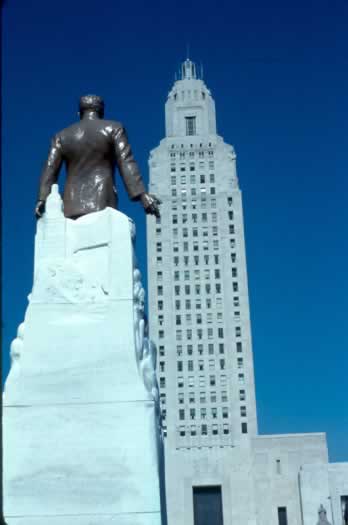 The Huey Long monument and tomb on the State Capitol grounds in Baton Rouge (Staff Photo) |
On May 16, 1932, after only 14 months of construction, the new building was dedicated to the citizens of Louisiana. Ironically, Huey P. Long was unable to attend because of pressing senatorial duties in Washington D.C.
On September 8, 1935, Long, then a U.S. Senator, was fatally wounded by an assassin in the Capitol building, where the bullet holes are still to be seen on the wall. He died two days later as a result of his wounds and is interred in the Capitol gardens.
Design of the Louisiana State Capitol
As the tallest state capitol in the United States, the building is 450 feet high with 34 floors. The cost to complete the building was a modest $5 million.
It is one of only four skyscraper capitols in the country and one of only nine capitol buildings that does not have a dome.
The architects of the State Capitol used symbolism throughout the design of this towering building. As the square tower rises, it is cut away to an octagon at the 22nd floor.
At this point four allegorical winged figures guard the corners, representing Law, Science, Philosophy and Art. Each figure is different, as are the views of the Capitol from differing angles.
Exterior Steps
On the initial approach to the front (south side) of the capitol, one immediately notices the grandiose set of stone steps which lead to the main entrance.
The 48 steps leading to the first floor bear the names of the fifty states in order of admission to the Union.
The last step lists both Alaska and Hawaii. Because construction was completed before the two states were admitted, only one step was left, so both names were engraved on the 49th step alongside the state motto and “E Pluribus Unum”. The front steps symbolize the interdependence of the fifty states and welcome visitors from Louisiana, other states and the world.
Inside the Capitol
At the top of the steps, and through the entrance doors, is Memorial Hall, sometimes erroneously referred to as the "rotunda." But the room is not round, and has no dome. The rectangular hall measures 35 by 120 feet and is two stories high. The floor is made of Mt. Vesuvius lava from Italy.
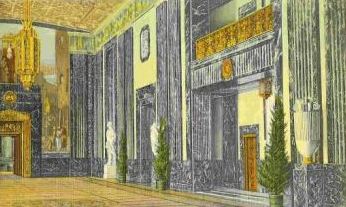 Memorial Hall in the "New" Louisiana State Capitol Building |
In the center of Memorial Hall is a 3,290 pound bronze relief map of Louisiana. The map lists each of the 64 parishes (counties) in the state around its border and depicts symbols of Louisiana’s major industries and natural products.
The House of Representatives is on the west side of the Capitol. The 105 member desks are made of solid American Walnut and Australian Laurel. One hundred desks date back to 1932. The remaining five were added in the 1960s due to an increase in membership.
The 39-member Louisiana Senate has its chambers on the east end of the structure.
Vintage Images of the Louisiana State Capitol
Also shown on this site are vintage postcards of the State Capitol, and photographs of the Capitol.
The "Old" Louisiana State Capitol Photo by the author, August, 1978 |
 |
The "New" Louisiana State Capitol under construction Photo courtesy of the Louisiana House of Representatives |
 |
The Louisiana State Capitol as seen in the spring of 2005, with live oaks and azaleas Photo Copyright by the author |
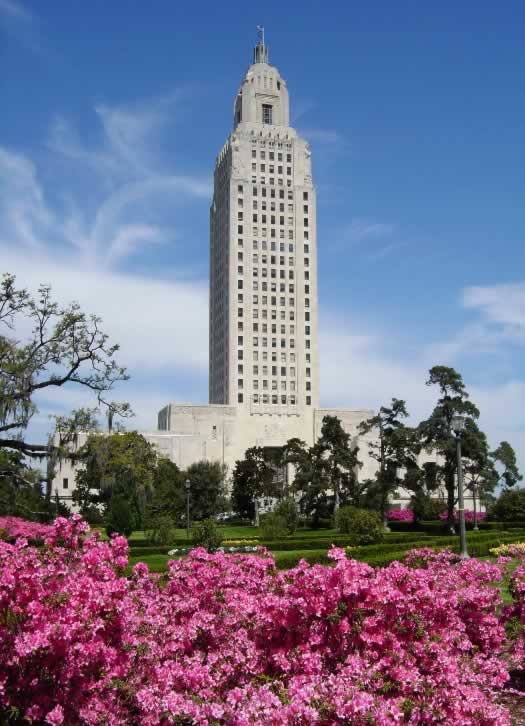 |
Vintage postcard showing the Huey P. Long memorial, Louisiana State Capitol Grounds, Baton Rouge |
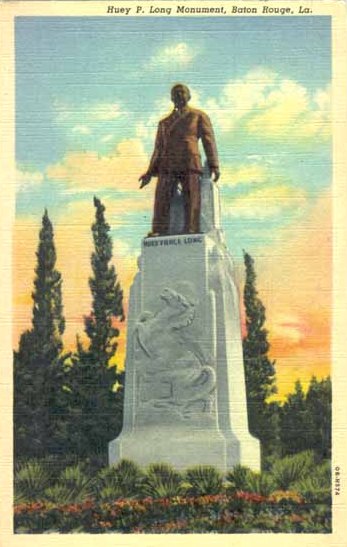 |
| More Louisiana Travel Information | ||
 |
 |
 |
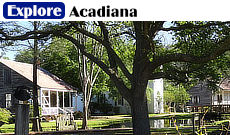 |
 |
 |
 |
 |
 |